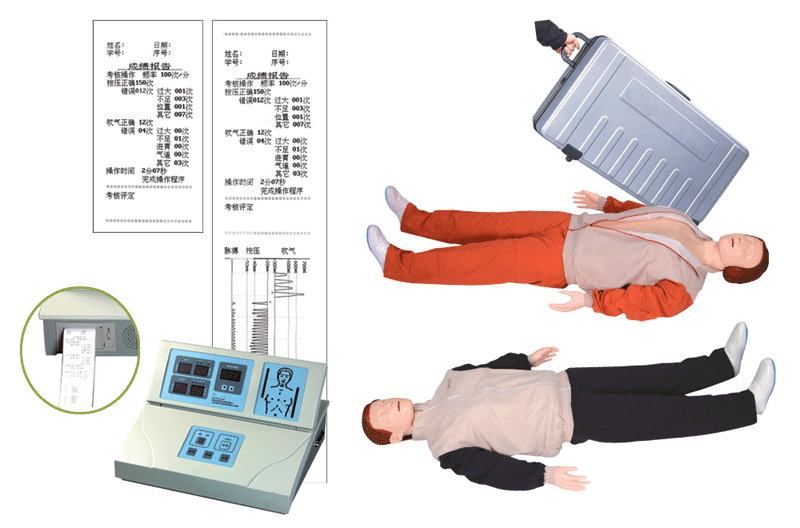Computer CPR Simulator

Computer CPR Simulator
Executive Standard: American Heart Association (AHA) 2005 International Cardiopulmonary Resuscitation (CPR) & Cardiovascular Emergency (ECC) Guidelines Standard Features:
1. Simulate standard airway open display, language prompt;
2. Artificial hand position chest compression indicator display, digital count display, language prompt:
· The pressing position is correct, the wrong indicator light display, digital count display, wrong language prompt;
· The correct pressing strength (4-5cm area), and the display of errors (<4-5cm <area) are displayed by the dynamic feedback of the movement of the bar (yellow, green, red) digital indicator lights. Language prompt;
3. Indicator light display, digital count display and language prompt for artificial mouth-to-mouth breathing (blowing):
· The display of the blown tidal volume ≤500ml / 600m-1000mll≤ is displayed by the dynamic feedback of the bar (yellow green red) digital indicator movement; the correct and wrong digital count display and the wrong language prompt;
· The insufflation tidal volume is too fast or too large, causing the gas to enter the stomach to show the indicator light; digital count display; wrong language display;
4. Compression to artificial respiration ratio: 30: 2 (single or double);
5. Operation cycle: 2 effective manual insufflation followed by pressing and manual insufflation 30: 2 five cycles of CPR operation;
6. Operating frequency: the latest international standard: 100 times / minute;
7. Operation mode: training operation, assessment operation;
8. Operation time: time is measured in seconds, and the operation time can be set;
9. Language setting: You can set the language prompt setting and prompt volume adjustment setting; or turn off the language prompt setting;
10. Results printing: The operation results can be thermally printed with long transcripts and short transcripts;
11. Changes in vital signs: At the initial state, the simulated person's pupils are dilated and the carotid artery is not pulsating. During the compression process, the carotid artery is passively pulsating. The pulsation frequency is consistent with the compression frequency. After successful rescue, the simulated person's pupils return to normal and the carotid artery is autonomous. Pulsating.
12. Power supply status: 220V external power supply is adopted, and 24V is output through the voltage regulator.
Material characteristics: Facial skin, neck skin, chest skin, hair, imported thermoplastic elastomer mixed glue material, made of stainless steel molds and high-temperature injection molding by injection molding machine, with accurate anatomical signs, real feel, uniform skin color, realistic shape , Beautiful appearance, durable, disinfection and cleaning without deformation, easy to disassemble and replace, and other materials, its materials have reached the same level abroad.
CPR TRAINING MANIKIN
1. External breast compression and artificial respiratory: indicator light display, digital display device and sound prompting device;
2. Operation mode: exercise mode; examine mode
3. Operation time: can count and set the operation time
4. Sound prompting device: volume control; turning on or turning off sound prompting device
5. Print: print operation result
6. Examination of pupil response: pupil will change into normal size after accomplishing the rescue process;
7. Examination of carotid response: touch carotid pulse by hand; simulating spontaneous carotid pulse in compression process; simulating spontaneous carotid pulse after examine operation;
8. Working conditions: output power is 24V, the manostat apply to various external power;
Alternative Accessories:
1. Trauma modules of limbs
Curtain Cafe Rod,Chrome Cafe Rod,Extendable Cafe Rod,Brushed Nickel Cafe Rod
HANGZHOU AG MACHINERY CO.,LTD , https://www.famourdecor.com